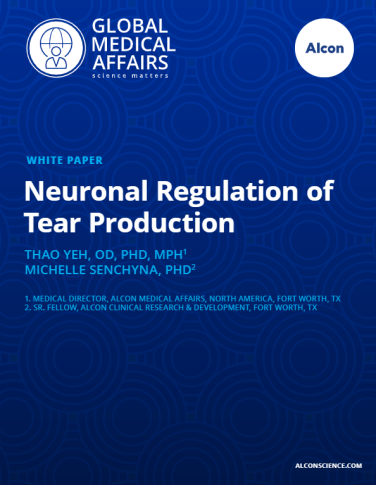- Dry Eye

KEY TAKEAWAY POINTS
The tear film protects the eye against potential harm or irritation a nd provides lubrication and nourishment to ensure comfort and stable vision.
Dry eye disease is a condition of tear deficiency, whether due to a compromised quantity or quality of tears, stemming from a dysfunction of the lacrimal functional unit (LFU).
The LFU, which comprises of the secretory glands and neural network that connects them, coordinates tear production in response to neurosensory signals received from the ocular surface.
Activation of the LFU from the ocular surface begins with transient receptor potential (TRP) ion channels, which are located on corneal sensory nerve endings and detect a wide array of environmental stimuli.
The TRP melastatin 8 (TRPM8) ion channels detect small reductions in temperature on the ocular surface associated with normal tear evaporation and activates the LFU to replenish tears.
Due to central role of TRPM8 in basal tear production, TRPM8 is being explored as a therapeutic target for dry eye disease.

